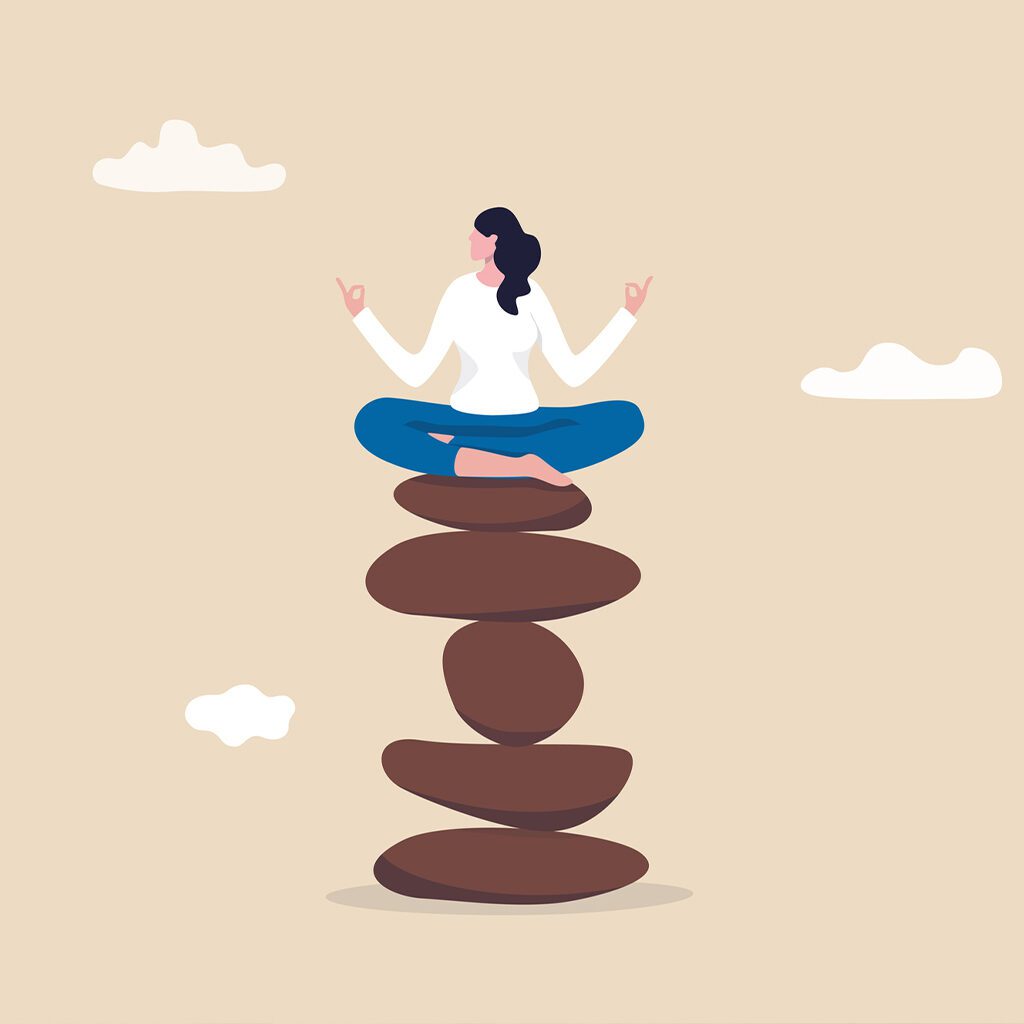All About Yoga
For many, the visual that springs to mind when they think of yoga is a long, lean woman in tight-fitting clothing sitting in a meditative position, hands together, muttering “ohm” over and over. When she stops her meditation, she effortlessly contorts her body into the shape of a soft pretzel, all the while smiling serenely. This is a turnoff for many who feel that they would not fit in with the “ohm” crowd or just aren’t flexible enough to practice yoga. This visual is not an accurate representation of what yoga is or who practices it. Yoga is not some inaccessible exercise reserved for Cirque du Soleil alumni; it is an extremely beneficial practice that is accessible to just about everyone, regardless of their fitness level.


According to the American Yoga Association, “The word yoga means ‘to join or yoke together’ and it brings the body and mind together in one harmonious experience. The whole system of yoga is built on three main structures: exercise, breathing and meditation. The exercises of yoga are designed to put pressure on the glandular systems of the body, thereby increasing its efficiency and total health.”
The practice of yoga consists of different postures. Minako (Mina) Chong, Registered Yoga Teacher with a Certification from Yoga Alliance, teaches yoga classes at Nutrition World in Chattanooga. She explains, “There are hundreds of different kinds of postures. Each posture will help develop a different focus area like balance, flexibility, strength, breath control or relaxation.” She adds, “From my own experience, yoga is the fastest way to tone your body and build your muscles.”
There is a spiritual component to yoga, as well, but it is often misunderstood. Contrary to popular belief, the practice of yoga doesn’t require that you adhere to any particular religious beliefs.
“The practice of yoga is much more than physical exercise – it is a methodology of how to live your life and connect with the universal spirit or God,” Chong explains. This connection can be applied to your life regardless of your spiritual beliefs, and the time you spend practicing yoga can be utilized to raise your spiritual awareness. Chong adds, “Yoga is not a religion itself, but a methodology for physical and mental development to improve the human spirit. It complements any belief system.”
Yoga has been around for more than 5,000 years and, as such, has many evolutions. There are far too many to cover here, but they include Hatha, the most common form practiced in the West; Bikram, an intense yoga practiced in very hot temperatures; Iyengar; Ashtanga (also known as Power Yoga); Anusara; Yin; Restorative; Kundalini; and Integrative Yoga Therapy. Suffice it to say that there is something for everyone. A yoga teacher should be able to help find a practice that is right for each individual.
Yoga can be practiced by just about anyone – women and men, young and old, those with poor health and the very healthy – and there are benefits for all. Becky Dempsey, a Certified Yoga Instructor registered with Yoga Alliance and teacher at the Sports Barn, is passionate about the benefits of yoga.



“Anyone can benefit from yoga,” Dempsey says. “It is possible to practice yoga in a chair or wheelchair, and you can modify any pose to suit your physical abilities. If someone has serious health concerns, they can work one-on-one with a yoga instructor certified in therapeutic yoga.”
If you have never been to a yoga class, but would like to try it, Dempsey has some advice. “Go and talk to an instructor before taking a class,” she advises. “If you have an illness or some physical limitations, let them know. A good instructor can recommend a class that you will feel comfortable in and will benefit from.”
The benefits of yoga are far-reaching and go beyond those of traditional cardiovascular exercises. Susan Bryant, Experienced Registered Yoga Teacher (E-RYT), Certified Yoga Therapist (CYT), Certified Yoga for Golfers Instructor and teacher at Clear Spring Yoga in Chattanooga, explains these benefits. “Yoga impacts the body by calming the nervous system with deep breathing, thus relieving stress,” Bryant says. “This cultivates a healthy circulatory system by bringing more fresh blood and oxygen to the muscles and tissues at a deep cellular level. It improves digestion and elimination, encourages better sleep, and improves attention and clarity. Yoga also builds strength and flexibility and teaches the student a deep intuitive sense of listening to and believing what their body is telling them.” These are improvements we can all use, regardless of our fitness level.
There are likely many places in your area that offer quality yoga instruction for people of all ages and abilities. Give an instructor a call and start reaping the benefits of this ancient practice right away.
Looking to give yoga a try? Here’s two guided at-home yoga workouts from Chattanooga based professional yoga educators Jessica Jollie, whose Yoga workout guide is here, and Jonathan Ellis, with his stress relieving at-home Yoga workout guide here.
Minako "Mina" Chong
Registered Yoga Instructor, Nutrition World
Becky Dempsey
Registered Yoga Instructor, Sports Barn

